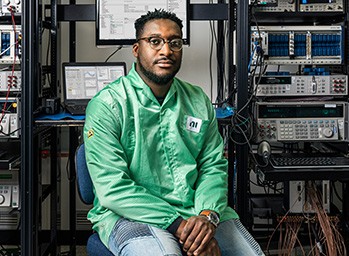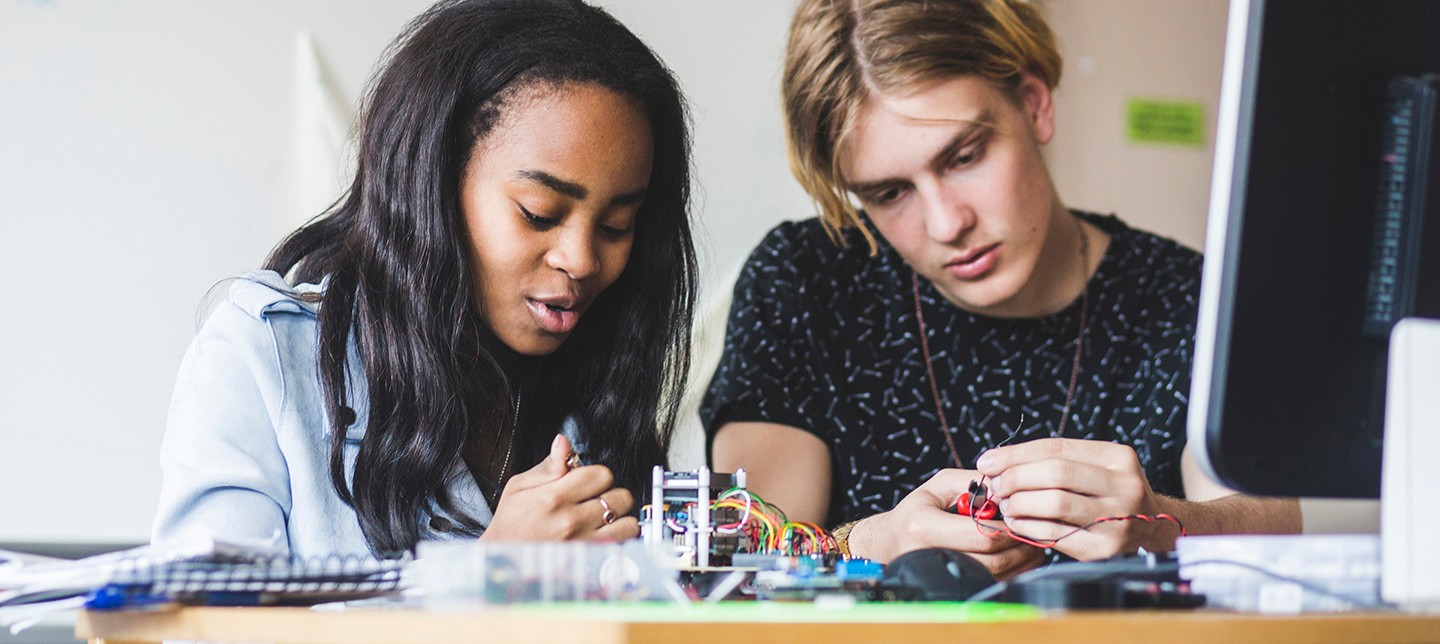
What Makes a Measurement
It's not enough to only find failure; it's just as important to measure failure with confidence.
From Saturday, Nov 23rd 7:00 PM CST - Sunday, Nov 24th 7:45 AM CST, ni.com will undergo system upgrades that may result in temporary service interruption.
We appreciate your patience as we improve our online experience.

More than 20 years ago, Steven Seiden recognized that a “digital divide” among youth in the Washington D.C. metro area would have a negative impact on the future and accessibility of careers in technology. Today Steven continues to support local programs that offer students an opportunity to fail—because failure, he says, leads to self-compassion and builds confidence.
Steven Seiden, Founder and President,
Acquired Data Solutions, Inc.
I've been teaching STEM literacy programs for five summers to D.C. area youth, and been part of the digital divide movement since 1999. In 1999, I joined an adult nonprofit called ByteBack, where I volunteered and taught Visual Basic courses. A year later I became a Board Member and eventually Board Chair. I had an 18-year journey with Byte Back.
I have been extremely fortunate to be part of a family where digital literacy was always accessible. I went to computer camp when I was 14 years old in Wisconsin, and because of my upbringing, I’ve always been attracted to digital divide issues. And especially in the Washington, D.C. region, where I am from, there's been a digital divide in the adult population. Now the pandemic has reopened digital divide gaps not only in D.C. but throughout the entire country. This gap is growing at a rate we haven’t seen in a while. Providing opportunities that may not be available to everyone is one of my core values.
On March 16th, when the pandemic hit, it was crazy. The world went completely virtual, and nobody went to school. So, I said to my daughter: “What do kids need to learn if they never go back to school?” Nobody knew what would be impacted by the pandemic. She's 16, a junior in high school, and she said we don't learn about financial management, the economy, or how to show up.
So, we changed our curriculum from STEAM (Science, Technology, Engineering, Arts, and Math) to TEAMS—Technology, Economy, Art, Marketing, and Socialize. You can take science, engineering, and math, and combine them into technology—if you don't have all three, then you don’t have technology. So, we wrapped all those things into technology, because the kids need human skills beyond the tech. For example, economy, which is so important because so many kids saw their parents not working and wondered why.
There's an initiative in D.C. that's called Summer Youth Employment Program, where the municipal government pays kids from ages 14-24, $10 an hour to go work for companies. So last summer we taught 40 interns virtually who were paid by the D.C. government. We have close to 50 high school and college interns this summer.
I believe that kids learn through brand, so I teach through brands. The first thing we do in this class is we go through all these popular companies and brands and connect technology, economy, arts, marketing, and socialization to each brand. For example, if you ask a kid why you care about radio frequency (an important field to NI), the kid might not have an answer. But if you ask the kid about Apple, they might say their cell phone. That answer would be correct for both questions and now the kid is much more interested in the subject.
They might not know why they're in freshman chemistry, but we make the connection that they are in freshman chemistry to learn how to make soles for Nike shoes so LeBron James can play basketball.
I want my students to see that everything around them is STEM.
So, this summer we're evolving the program from TEAMS to MASTERY—Mindset, Art, Storytelling, Technology, Economy, Reflection, and You. MASTERY is TEAMS with an R and Y included. The reason we changed the program is because we learned so much from last summer’s virtual experience, about what students were missing. We also love that “Technology” is in the middle with human skills wrapped around it.
That is an excellent question. We believe that every aspect of MASTERY is part of our everyday DNA. We have a mind, so we need a mindset. We have eyes, so we constantly visualize art. We have a mouth to tell stories. We use technology every day and at some level we are technology. We need money, so we added economy. That brings us to the “Reflection” component—without reflection we may never learn. And it’s this thinking piece that makes the “You” component. Without reflection, there's no way to you.
Now art is very fascinating because right now, from the art standpoint, you can talk about visualization, right? But we don't necessarily visualize the careers that we want, the path to get there, or how we show up through visualizations.
And when we do visualize it, we certainly don't articulate it or know how to share it out. A large part of the “Art” component focuses on how we see ourselves. We don’t spend much time on ourselves even though we are often our worst critic. Focusing on visualization allows us to see how beautiful we all are— including ourselves.
Again, another interesting question, I am a self-compassion guy, meaning without failure you can never reflect, grow, and build confidence. In other words, if we don’t give ourselves the self-compassion to fail, we can never build confidence. People quit things every day because they feel they are not good at something. Well, the only way that I know how to be better at something is to fail, breathe, and try again until you are content with your progress. This is the process of self-compassion.
To say it another way, if a stranger walks up a set of stairs and trips, typically a person will ask, “Are you ok?” But when we trip on the stairs, we typically say something much worse to ourselves. So, the question is why do we give a stranger more compassion than we give ourselves for the same thing?
Everyone thinks of Washington D.C. as a large, underserved population, but when I'm with these kids they don't feel that way at all. And so, I'm trying to help these kids to understand the opportunity they have in front of them just by showing up.
Understanding how to show up, why you show up, and what you say is 90% of our world. For these kids, 90% of their life is how they show up, when they show up, and where they show up. I believe right now that STEM literacy is one of the most impactful ways to close the diversity, equity, and inclusion (DEI) gap and digital divide.